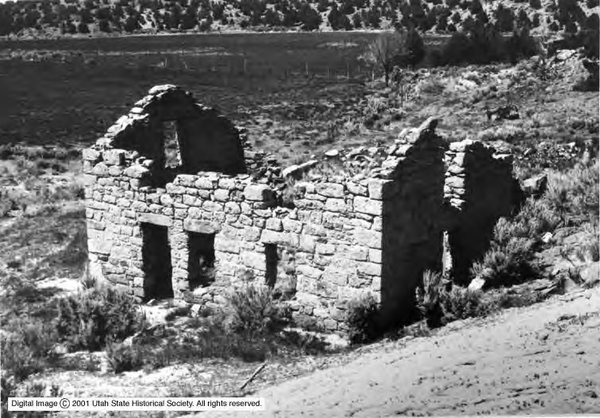Dublin Core
Title
Description
In rural Utah, national and state parks, or even music and art festivals, draw visitors to small towns. But in other areas, haunting remnants of life lure history buffs and paranormal investigators alike to see our state’s famous ghost towns. Ghost towns are what remains after environmental disasters or boom-and-bust economic cyles leave a community deserted. With dilapidated buildings and oftentimes graveyards, ghost towns are real-world museums that can give visitors a visceral connection with the past.
Getting to ghost towns can sometimes be hazardous, and those that are more easily accessed risk being vandalized and destroyed completely. Take Grafton, for example, which lies in the shadow of Zion National Park and was featured in the 1969 film Butch Cassidy and the Sundance Kid. Settled in 1859, Grafton was ultimately abandoned due to unpredictable flooding from the Virgin River. Because of its national spotlight, local community members organized under the Grafton Heritage Partnership Project to purchase the townsite, protect and restore its historic structures, and provide interpretation signs for its thousands of annual visitors.
Some ghost towns find new life as art havens. The Grand County town of Cisco was settled in the 1880s as a transport hub for the Denver and Rio Grande Western Railroad. But it was never integrated into the US highway system and slow population decline led to its abandonment. In 2015, a Chicago-based artist purchased the town and focused on stabilizing the early-twentieth century buildings. Now Cisco has an artist residency program, Airbnb rentals, and several colorful murals that give a once-desolate Old West main street new life.
Other ghost towns are not so fortunate. Not far from Cisco is the town of Sego, which was originally a base for coal mining, but was abandoned by 1955. At one point, it caught fire, dooming most of its historic wooden structures. Today, only one stone building remains and hazards like flash flooding and deserted mine shafts make it difficult to visit.
Whether it’s a well-preserved outdoor museum, a funky artists colony, or simply a stone building in a wide open field, Utah's ghost towns are places to visit with respect.
Creator
Source
_______________
See “Ghost Towns in Utah,” Visit Utah, accessed January 2024; Emma Penrod, “Ghost towns still standing in Utah, but barely,” October 6 2011, The Daily Universe, accessed January 2024; Emily Cataneo, “How one woman turned an abandoned Utah ghost town into an artists’ haven,” January 15, 2021, Roadtrippers, accessed January 2024; “Ghost Towns in Utah,” Atlas Obscura, accessed January 2024; Becky Bruce, “10 famous Utah ghost towns and where to find them,” May 22, 2021, KSL.com, accessed January 2024; “Already Accomplished,” Grafton Heritage Partnership Project, accessed January 2024.

